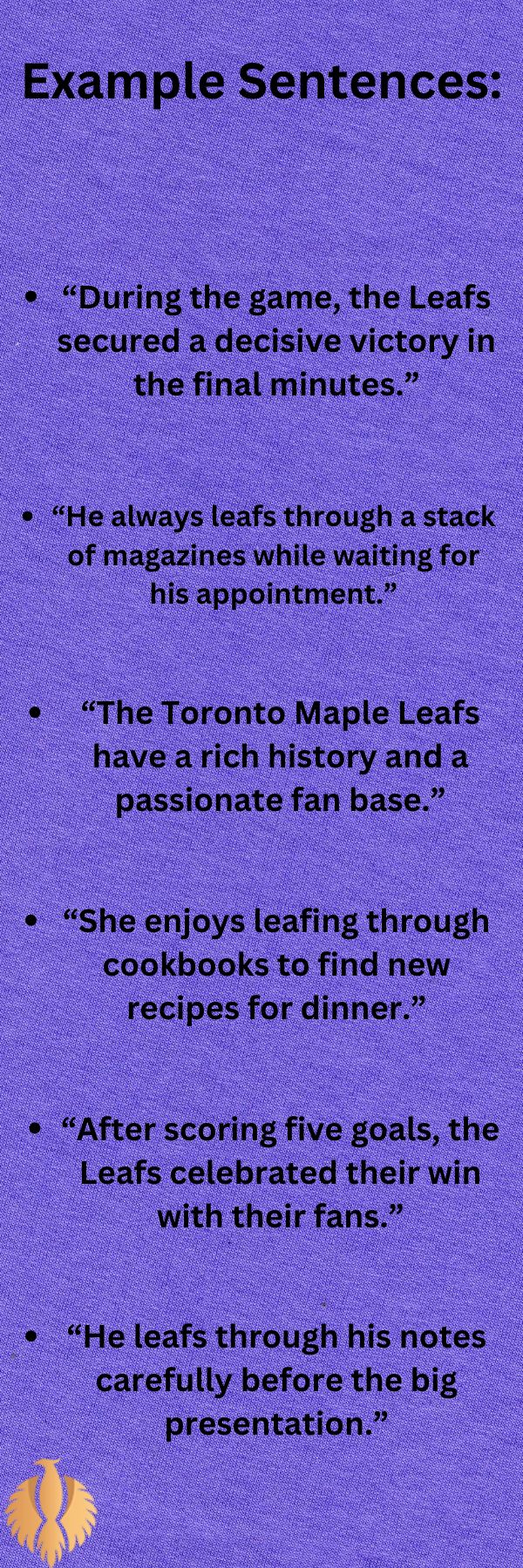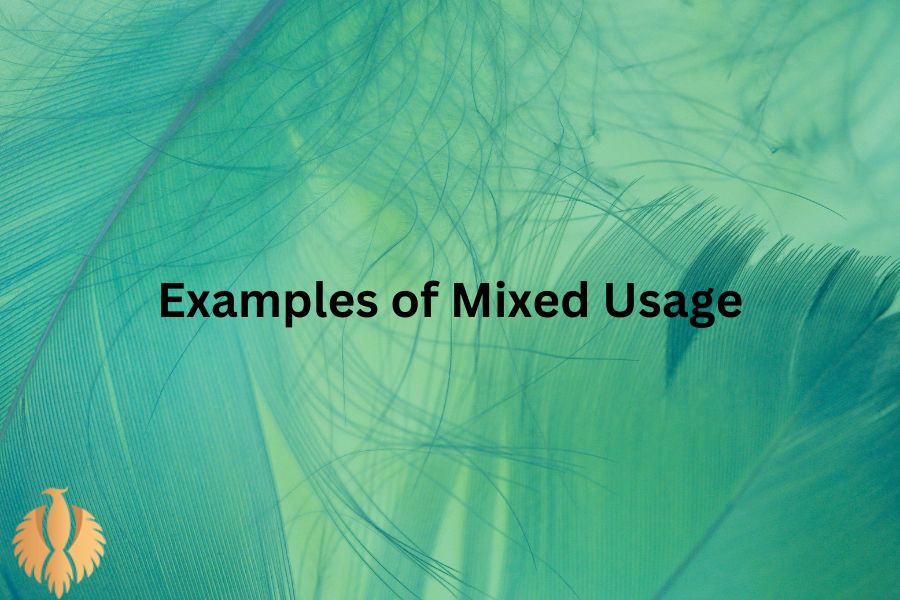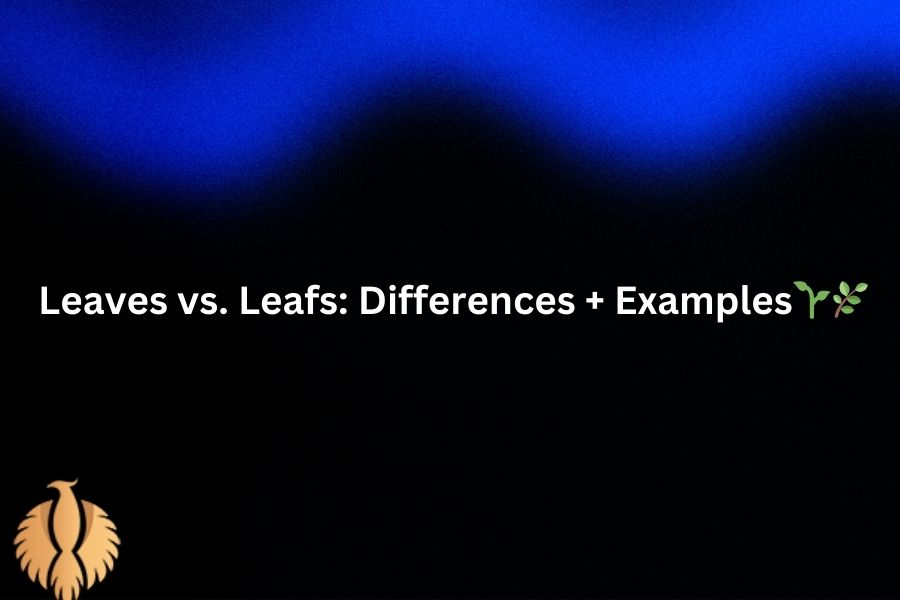When discussing the verdant world of plants or the thrilling arena of sports, you might encounter the terms “leaves” and “leafs.” At first glance, they may seem interchangeable, yet they serve distinct purposes in the English language.
“Leaves,” the plural form of “leaf,” refers to the flat, green structures found on plants, crucial for photosynthesis and respiration.
In contrast, “leafs” refers to the third person singular form of the verb “to leaf,” meaning to turn pages, and is also a proper noun representing the Toronto Maple Leafs, a storied professional ice hockey team.
Understanding these differing contexts is essential for effective communication, particularly in written forms. In this article, we will delve into the nuances of “leaves” and “leafs,” unpack their grammatical distinctions, and provide ample examples to illustrate their proper usage.
You might also enjoy: Top 100 Commonly Used Verbs That Start With V [2024]
Understanding Pluralization in English

To grasp the differences between “leaves” and “leafs,” it’s crucial to first understand the general rules governing pluralization in English.
Most nouns in English form their plurals by adding an “s” to the end of the word. For example, “cat” becomes “cats,” and “dog” becomes “dogs.”
However, English also includes a number of irregular nouns, exceptions, and special cases that make pluralization more complex.
In English, nouns ending in “f” or “fe” often change the “f” or “fe” to “ves” to form their plural. This rule applies to words like “leaf,” resulting in the plural “leaves.”
Therefore, whenever you are talking about more than one leaf from a tree, bush, or plant, the correct term to use is “leaves.”
In this case, “leaves” not only serves as the plural of “leaf” but also carries specific meanings tied to the natural world, such as botanical discussions, seasonal changes, and ecological references.
Why the Distinction Matters
Using the correct form of these words matters for clarity and effective communication. Especially in written contexts, where readers depend on accurate language, a mistake can lead to misunderstandings.
For example, if someone writes “the leafs turned yellow in autumn,” it could confuse a reader into thinking they are referring to either a completely different subject or a specific action rather than the foliage itself.
You might also enjoy: Top 100 Commonly Used Verbs That Start With K [2024]
Pronunciation Differences
While “leaves” and “leafs” are spelled similarly, they are pronounced differently. “Leaves” is pronounced as /liːvz/ (similar to “leaves” in “sleeves”), with a long “ee” vowel sound followed by a “vz” sound.
On the other hand, “leafs” is pronounced as /liːfs/ (similar to “chiefs”), with the same initial vowel sound but ending with an “fs” sound. This distinction in pronunciation further helps to clarify meaning in spoken language.
Recognizing these differences is crucial, especially in contexts where verbal communication is key, such as public speaking, storytelling, or casual conversations.
The Plural and Singular Usage

Understanding the uses of “leaves” and “leafs” is crucial for proper sentence construction and effective communication.
Leaves
- Definition: “Leaves” is the plural of the noun “leaf,” which refers to the broad, flat structures of plants that are typically green and connected to the stem or branches. These leaves are vital for processes such as photosynthesis, respiration, and transpiration, making them crucial to plant health and ecosystem balance.
You might also enjoy: Top 100 Commonly Used Verbs That Start With I [2024]
– Example Sentences:
- “In spring, the garden bursts into life with new leaves sprouting everywhere.”
- “The leaves shimmered in the sunlight, creating a stunning display of green hues.”
- “We love to collect colorful leaves during our nature walks in the fall.”
- “The leaves of the birch tree turned a bright yellow as autumn arrived.”
- “As the wind blew, the leaves danced gracefully to the ground.”
- “She pressed a few leaves in her journal to remember her favorite hiking trip.”
- “Fallen leaves covered the ground, making a crunchy carpet underfoot.”
- “The leaves play a crucial role in the life cycle of a tree, providing nutrients and energy.”
- “During autumn, many trees shed their leaves to conserve water and energy.”
- “He picked several leaves from the mint plant to use in his cooking.”
- “The botanical garden showcases a diverse collection of plants and their unique leaves.”
- “Some animals rely on the camouflage of leaves to hide from predators.”
- “The soft green leaves of the new shoots signify the arrival of spring.”
- “After a heavy rain, the leaves sparkled with droplets of water.”
- “The children gathered leaves to make decorations for their school project.”
- “In poetry, leaves often symbolize change, growth, and the passing of time.”
- “During the hike, they noted how different trees produce different types of leaves.”
- “Observing the leaves’ transition from green to red and orange is breathtaking.”
- “Many herbal teas are made using leaves from various plants known for their health benefits.”
- “Leaves that fall on water can create unique patterns as they drift.”
- “In the fall, the crisp air is often accompanied by the fragrance of drying leaves.”
- “The leaves on the plum tree were laden with ripe fruit ready for harvest.”
- “Some cultures celebrate the changing of the leaves as part of their seasonal festivals.”
- “Mosquitoes tend to swarm around areas with thick leaves, making it hard to enjoy outdoor activities.”
- “Analysts study how changing climates can affect plant leaves and their nutrient capabilities.”
- “The vibrant hues of autumn leaves attract photographers from all around.”
- “Leaves gathering on the lawn signal the start of winter preparation.”
- “The variety of leaves in the rain forest contributes to its rich biodiversity.”
- “Children often make art projects using leaves collected from school yards.”
- “The leaves were so large that they seemed to compete with the flowers for attention.”
Leafs
- Definition: “Leafs” is primarily recognized as a verb form—specifically the third-person singular present tense of “to leaf,” meaning to turn pages. In a different context, “leafs” also refers to the Toronto Maple Leafs, a storied professional ice hockey team based in Toronto, Canada.
– Example Sentences:

- “During the game, the Leafs secured a decisive victory in the final minutes.”
- “He always leafs through a stack of magazines while waiting for his appointment.”
- “The Toronto Maple Leafs have a rich history and a passionate fan base.”
- “She enjoys leafing through cookbooks to find new recipes for dinner.”
- “After scoring five goals, the Leafs celebrated their win with their fans.”
- “He leafs through his notes carefully before the big presentation.”
- “The Leafs’ next game is against their biggest rivals, creating even more excitement.”
- “As the playoffs approach, Leafs fans are anxious to see how the team performs.”
- “In his spare time, he leafs through old family photo albums, reminiscing about precious memories.”
- “The Leafs are known for their iconic blue and white colors.”
- “As he leafed through the catalog, he marked several items for his wishlist.”
- “Every weekend, the local bar is packed with fans eager to watch the Leafs play.”
- “In the library, she leafed through textbooks to find relevant information for her paper.”
- “The Leafs’ goalie made a spectacular save during last night’s game.”
- “While he waited, he leafed through the newspaper, looking for the sports section.”
- “Fans leafed through the stands at the arena, waving their team flags in support.”
- “After the season ended, he leafed through photographs of the Leafs’ most memorable moments.”
- “The tradition of celebrating Leaf’s victories is a beloved event in the city.”
- “During the intermission, she leafed through her phone, checking scores from other games.”
- “The Leafs are one of the oldest franchises in the NHL, with a dedicated following.”
- “She loves leafing through fashion magazines to explore new trends.”
- “The arena filled with cheers as the Leafs took the lead late in the third period.”
- “He often leafs through his notebook while brainstorming ideas for his project.”
- “The crowd roared as the Leafs scored the game-winning goal.”
- “Leafing through the team’s history reveals many iconic moments.”
- “The players leafed through their strategies before the upcoming season.”
- “As she leafed through her scrapbook, she fondly recalled game day memories.”
- “The fans adorned the arena with banners supporting the Leafs.”
- “He leafed through the old book to find the statistics he needed.”
- “The Leafs’ training camp is always highly anticipated by fans each year.”
You might also enjoy: Top 100 Commonly Used Verbs That Start With M [2024]
Cultural Significance
The term “leaves” possesses cultural and symbolic meanings that extend beyond its botanical definition. Leaves are often associated with themes of growth, renewal, and the changing seasons.
For instance, people frequently admire the stunning array of colors displayed by leaves during autumn, which symbolizes the transient nature of life and the passage of time.
In literary contexts, leaves have been used metaphorically to discuss life’s cycles, representing both beginnings and endings, as seen in poetry and prose. The imagery of leaves fluttering in the wind can evoke feelings of nostalgia or reflection on one’s personal journey, reminding readers of nature’s beauty and fragility.
On the flip side, the term “leafs,” as in the Toronto Maple Leafs hockey franchise, has tremendous significance within Canadian culture. The team’s legacy stretches over a century, making it a cornerstone of hockey history in North America.
The passion that surrounds the team fosters community and local pride, especially in Toronto, where the Maple Leafs are considered integral to the city’s identity.
Game nights bring fans together, generating an electric atmosphere filled with camaraderie and shared support for their team.
The emotional bond that fans maintain with the Leafs can evoke powerful sentiments—excitement during wins, frustration during losses, and hope during playoffs.
Therefore, both terms—“leaves” in nature and “Leafs” in sports—serve as conduits for cultural expression and personal meaning, connecting people to broader narratives about life, growth, and community.
You might also enjoy: Top 100 Commonly Used Verbs That Start With C [2024]
Examples of Mixed Usage

In some contexts, it’s fascinating to link both terms to illustrate their distinct significance. Here are examples of sentences that incorporate both “leaves” and “leafs”:
- “While the leaves danced in the autumn breeze, the fans excitedly awaited the next game of the Leafs.”
- “As the gardener filled his basket with leaves, he reminisced about the last Leafs game he attended.”
- “The sound of rustling leaves filled the air as the crowd cheered for the Leafs on TV.”
- “Leaves symbolize change in nature, just as the Leafs symbolize a beloved tradition for many fans.”
FAQs
- Q: What does the term “leaves” specifically refer to?
A: “Leaves” is the plural form of “leaf” and refers to the green structures on plants that are vital for processes like photosynthesis.
- Q: Can “leafs” be used interchangeably with “leaves”?
A: No, “leafs” specifically refers to a verb form meaning to turn pages or to the Toronto Maple Leafs hockey team, while “leaves” is used for multiple foliage.
- Q: What context is most appropriate for using “leafs”?
A: “Leafs” can be used in sports contexts when discussing the Toronto Maple Leafs or in reference to the action of turning pages.
- Q: How can I show possession for “leaf”?
A: To show possession for one leaf, use “leaf’s” (with an apostrophe), such as in “the leaf’s texture.”
- Q: Why is it important to distinguish between “leaves” and “leafs”?
A: Distinguishing between the terms enhances clarity in communication, especially in written contexts where precision is essential.
- Q: Are “leaves” or “leafs” used in idiomatic expressions?
A: “Leaves” may appear in phrases about nature, while “leafs” could appear in discussions about literature or sports.
- Q: Can the term “leaf” be used as a verb?
A: Yes, “leaf” can also be used as a verb, meaning to turn pages, and “leafs” is its third-person singular present form.
- Q: What are some examples of figurative language involving leaves?
A: Poetry often uses leaves to symbolize change, renewal, or the passage of time, such as “the leaves whispered secrets of the past.”
- Q: How do cultural perceptions of “leaves” differ across regions?
A: In many cultures, leaves symbolize growth and change, while in sports communities, terms like “Leafs” can represent local pride and loyalty.
- Q: What impact do the Toronto Maple Leafs have on Canadian culture?
A: The Maple Leafs hold significant cultural importance, fostering community spirit and a sense of identity for fans in Toronto and beyond.
You might also enjoy: Canceled or Cancelled: Grammar + Examples + Usage [2025]
Conclusion
In conclusion, understanding the distinction between “leaves” and “leafs” not only aids in grammatical correctness but also enriches our comprehension of how language reflects our experiences with both nature and culture.
While “leaves” pertains to the green structures that play a crucial role in the ecosystem, “leafs” emerges in sports terminology, specifically relating to the esteemed Toronto Maple Leafs hockey team.
The intricate interplay between these terms underscores the importance of context in language, as both convey unique meanings tied to human experiences.
By employing these terms accurately, we foster clearer communication and acknowledge the cultural significance they embody.
Embracing this understanding allows us to appreciate the richness of the English language while connecting us with the natural world and the collective spirit of our communities—whether we are admiring the beauty of changing leaves or celebrating the triumphs of our favorite sports teams.
As you navigate conversations, remember the power embedded within the words you choose to use, creating spaces for connection, understanding, and shared experiences.

Hi, welcome to my blog! My name is Omid and I am thrilled to have you here! I am an English language teacher with 12 years of experience and hold multiple international certifications (TESOL, IELTS, TOEFL, PTE, CELTA). Additionally, I hold a PhD in Applied Linguistics with a specialization in Teaching English as a Second Language (TESL), which fuels my passion for teaching English and assisting others in mastering the language. To me, nothing is more rewarding than helping individuals enhance their English language abilities through various methods. So, let’s embark on this journey of learning English together.




